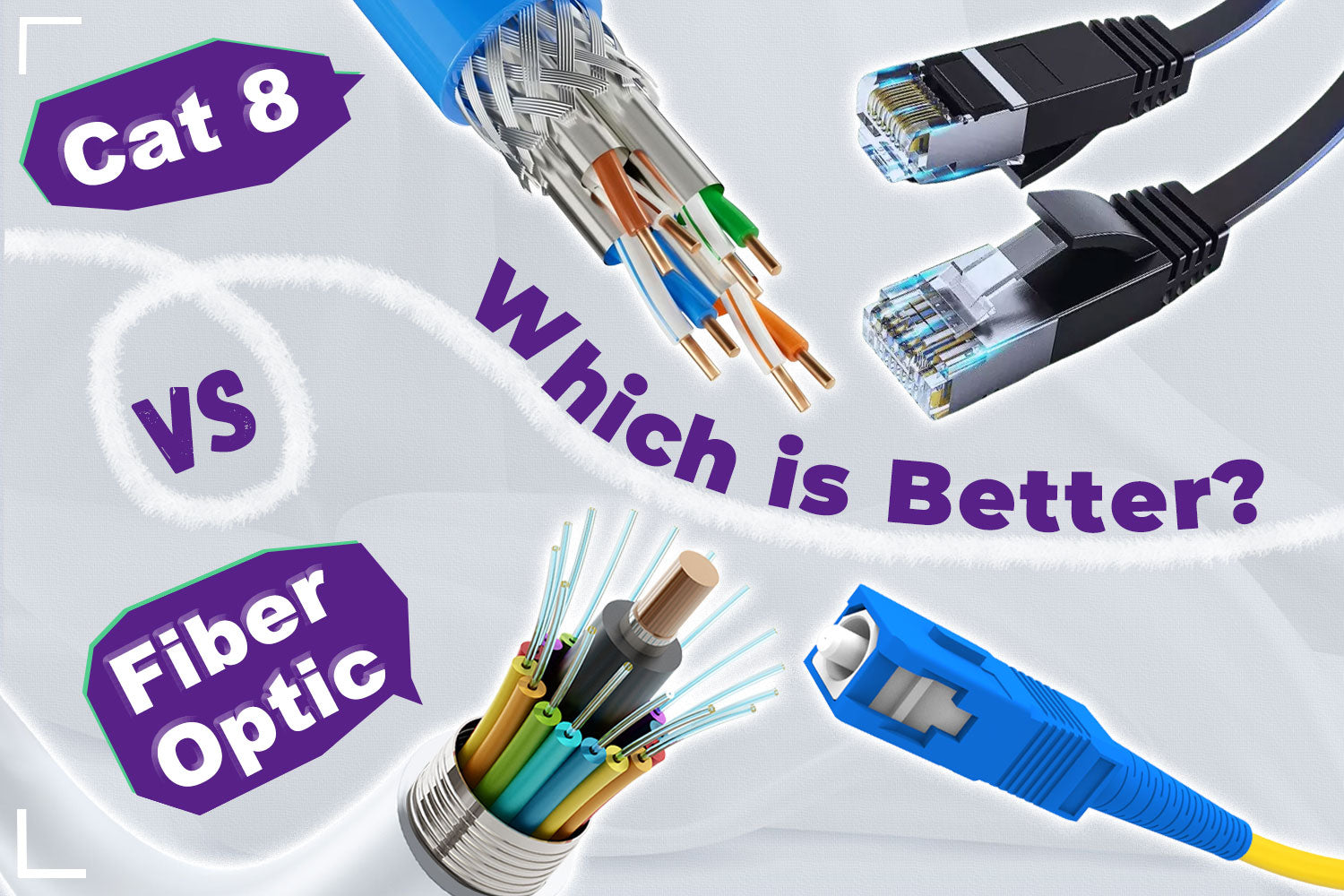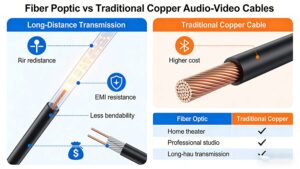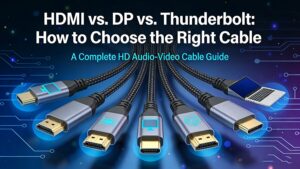Introducción
A medida que los centros de datos evolucionan para soportar cargas de trabajo basadas en IA, computación cuántica y servicios en la nube a hiperescala, se intensifica el debate sobre la infraestructura de red. Se plantea una cuestión clave: ¿Pueden los cables Ethernet CAT8 sustituir a la fibra óptica en las implantaciones de centros de datos de corto alcance? Aunque la fibra óptica ha dominado durante mucho tiempo la transmisión de datos a alta velocidad, los avances del CAT8 desafían esta jerarquía. Este artículo explora las capacidades técnicas, las implicaciones económicas y la viabilidad futura mediante un análisis basado en datos.
Cables CAT8: La solución de cobre de última generación
Especificaciones técnicas
Los cables CAT8, estandarizados por IEEE en 2021, están diseñados para velocidades de 25Gbps a 40Gbps a lo largo de 30 metros (98 pies) con un ancho de banda de 2.000 MHz. Sus principales características son:
Los cables CAT8, estandarizados por IEEE en 2021, están diseñados para velocidades de 25Gbps a 40Gbps a lo largo de 30 metros (98 pies) con un ancho de banda de 2.000 MHz. Sus principales características son:
- Diseño de par trenzado apantallado (STP): Resistencia EMI mejorada.
- Compatibilidad con versiones anteriores: Funciona con los conectores RJ45 existentes.
- Baja latencia: Ideal para aplicaciones sensibles a la latencia, como la inferencia de IA en tiempo real.
Ventajas sobre la fibra óptica
-
Eficiencia de costes
- Instalación: CAT8 no requiere herramientas especializadas, lo que reduce los costes de mano de obra en ~40% en comparación con la terminación de fibra.
- Hardware: Compatible con conmutadores estándar, lo que evita costosos transceptores ópticos.
-
Durabilidad
Los cables de cobre soportan mejor la flexión y la tensión física que los frágiles hilos de fibra, algo fundamental en los densos bastidores de servidores. -
Alimentación a través de Ethernet (PoE)
CAT8 admite PoE++ (hasta 90 W), lo que permite el suministro de energía y datos a través de un solo cable para dispositivos IoT, una función que la fibra no puede reproducir.
Fibra óptica: El intérprete inigualable
Por qué sigue reinando la fibra
La fibra óptica sigue siendo el estándar de oro para:
La fibra óptica sigue siendo el estándar de oro para:
- Transmisión a larga distancia: Sin degradación de la señal a lo largo de kilómetros.
- Escalabilidad del ancho de banda: La fibra monomodo alcanza velocidades superiores a 100 Gbps.
- Inmunidad EMI: Inmune a interferencias electromagnéticas, crucial para entornos industriales.
Limitaciones en escenarios de corto alcance
- Coste: Los transceptores ópticos y la mano de obra cualificada aumentan los costes iniciales en un 50-70%.
- Fragilidad: Los cables de conexión de fibra requieren una manipulación meticulosa.
- Mejoras complejas: La migración a velocidades superiores (por ejemplo, 400G) suele exigir un nuevo hardware.
Comparación cara a cara
| Criterios | Cable CAT8 | Fibra óptica |
|---|---|---|
| Velocidad máxima | 40 Gbps (30 m) | 100Gbps+ (100m+) |
| Latencia | <0,1 ms | <0,05 ms |
| Coste por metro | $2-$5 | $5-$15 + costes del transceptor |
| Resistencia EMI | Alta (diseño blindado) | Inmune |
| Suministro de energía | Compatible con PoE | No aplicable |
Caso práctico: centros de datos de corto alcance
Escenario: Un centro de datos a hiperescala que despliega clústeres de formación de IA con enlaces de servidor a conmutador de 10-20 m.
- CAT8 Ventajas:
- Ahorro de costes: 30% menor coste total de propiedad (TCO) en 5 años.
- Mantenimiento simplificado: Sin limpieza de fibras ni calibración de señales.
- Inconvenientes de la fibra: Excesivo para distancias cortas, con gastos innecesarios en transceptores.
Tendencias futuras y sinergias
- Implantaciones híbridas:
Combine CAT8 para conexiones intrarack y fibra para redes troncales/núcleo. - Innovaciones CAT8:
Las nuevas variantes de 2000 MHz+ pretenden reducir la diferencia de velocidad con la fibra en rangos inferiores a 30 m. - Redes preparadas para la cuántica:
A medida que evoluciona la informática cuántica (por ejemplo, el chip Willow de Google), el cobre de baja latencia puede complementar las interconexiones fotónicas.
Conclusión
Los cables CAT8 son una alternativa viable a la fibra óptica en aplicaciones de centros de datos de corto alcancesobre todo cuando el coste, la PoE y la durabilidad física son prioritarios. Sin embargo, la fibra sigue dominando en escalabilidad y rendimiento a larga distancia. Para prepararse para el futuro, una estrategia híbrida que aproveche ambas tecnologías ofrece una flexibilidad óptima.
Lo más importante:
Elija CAT8 para bastidores de servidores y dispositivos periféricos de menos de 30 m; opte por la fibra para la red troncal y las conexiones cruzadas de alta velocidad.
Elija CAT8 para bastidores de servidores y dispositivos periféricos de menos de 30 m; opte por la fibra para la red troncal y las conexiones cruzadas de alta velocidad.







